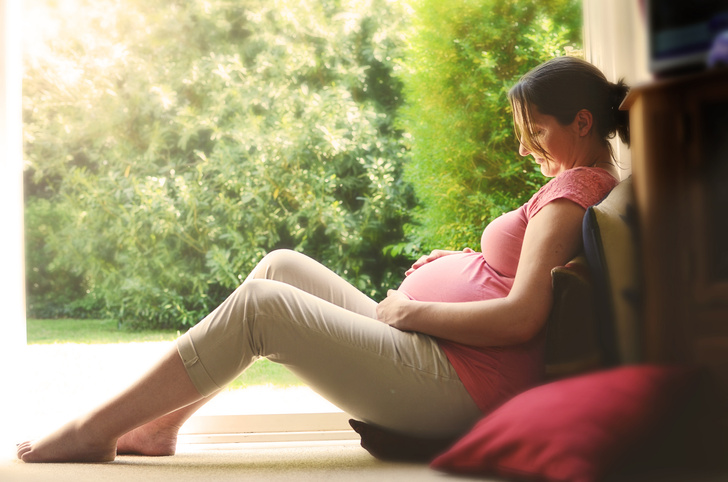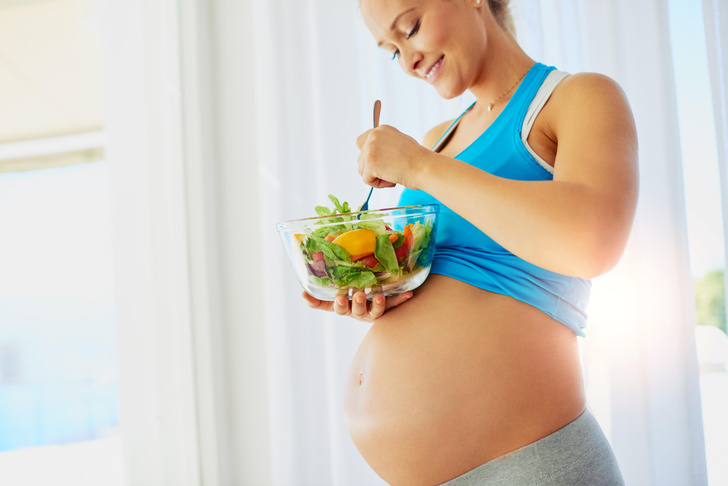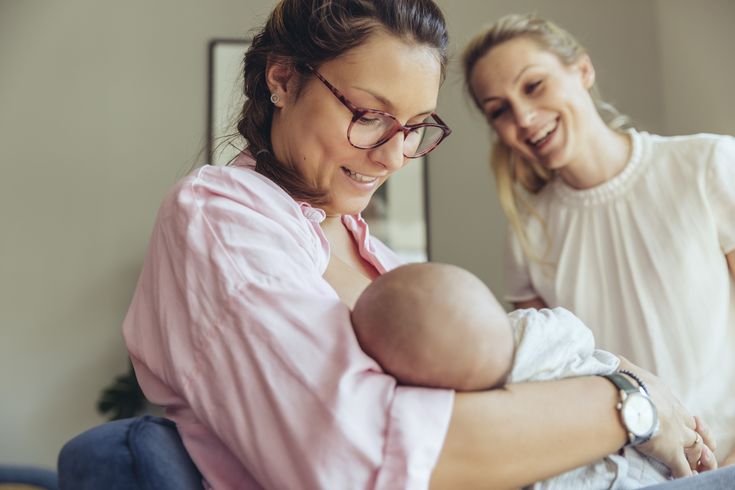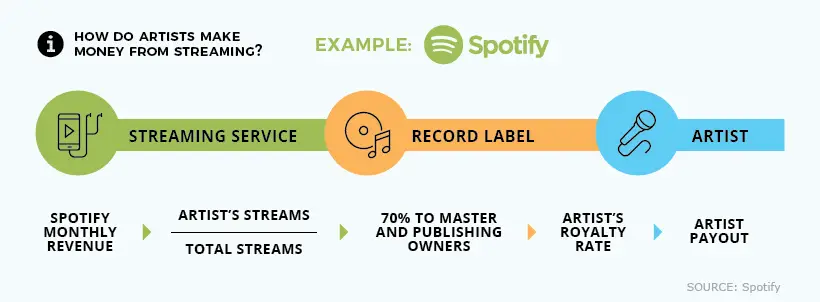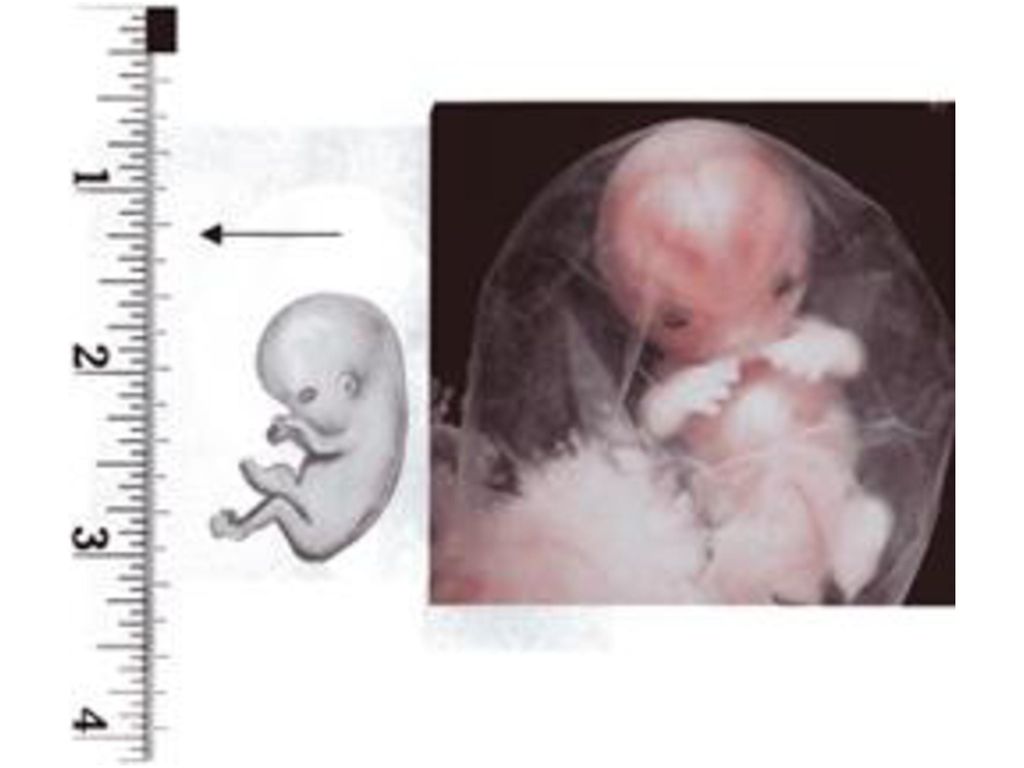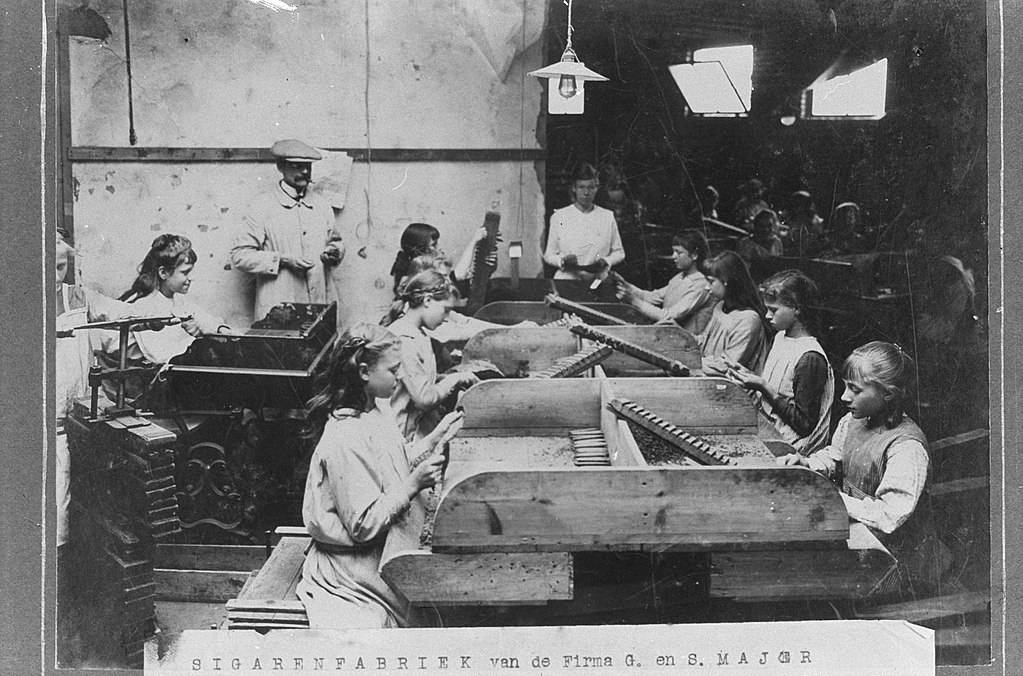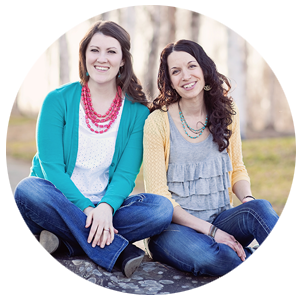Baby through pregnancy
Fetal development: Month-By-Month Stages of Pregnancy
When does a pregnancy start?
The start of pregnancy is actually the first day of your last menstrual period. This is called the gestational age, or menstrual age. It’s about two weeks ahead of when conception actually occurs. Though it may seem strange, the date of the first day of your last period will be an important date when determining your due date. Your healthcare provider will ask you about this date and will use it to figure out how far along you are in your pregnancy.
How does conception work?
Each month, your body goes through a reproductive cycle that can end in one of two ways. You will either have a menstrual period or become pregnant. This cycle is continuously happening during your reproductive years — from puberty in your teen years to menopause around age 50.
In a cycle that ends with pregnancy, there are several steps. First, a group of eggs (called oocytes) gets ready to leave the ovary for ovulation (release of the egg). The eggs develop in small, fluid-filled cysts called follicles. Think of these follicles as small containers for each immature egg. Out of this group of eggs, one will become mature and continue on through the cycle. This follicle then suppresses all the other follicles in the group. The other follicles stop growing at this point.
The mature follicle now opens and releases the egg from the ovary. This is ovulation. Ovulation generally happens about two weeks before your next menstrual period begins. It’s generally in the middle of your cycle.
After ovulation, the opened (ruptured) follicle develops into a structure called the corpus luteum. This secretes (releases) the hormones progesterone and estrogen. Progesterone helps prepare the endometrium (lining of the uterus). This lining is the place where a fertilized egg settles to develop. If you don’t become pregnant during a cycle, this lining is what is shed during your period.
On average, fertilization happens about two weeks after your last menstrual period. When the sperm penetrates the egg, changes occur in the protein coating of the egg to prevent other sperm from entering.
When the sperm penetrates the egg, changes occur in the protein coating of the egg to prevent other sperm from entering.
At the moment of fertilization, your baby’s genetic make-up is complete, including its sex. The sex of your baby depends on what sperm fertilizes the egg at the moment of conception. Generally, women have a genetic combination of XX and men have XY. Women provide each egg with an X. Each sperm can be either an X or a Y. If the fertilized egg and sperm is a combination of an X and Y, it’s a boy. If there are two Xs, it’s a girl.
What happens right after conception?
Within 24 hours after fertilization, the egg begins rapidly dividing into many cells. It remains in the fallopian tube for about three days after conception. Then the fertilized egg (now called a blastocyte) continues to divide as it passes slowly through the fallopian tube to the uterus. Once there, its next job is to attach to the endometrium. This is called implantation.
Before implantation though, the blastocyte breaks out of its protective covering.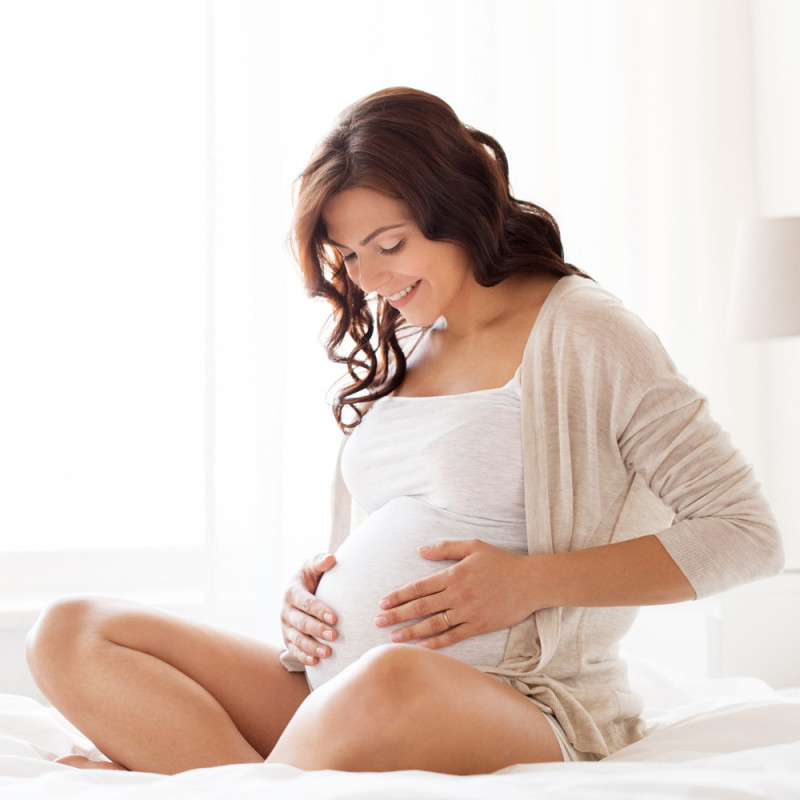 When the blastocyte makes contact with the endometrium, the two exchange hormones to help the blastocyte attach. Some women notice spotting (slight bleeding) during the one or two days when implantation happens. This is normal and isn’t something you should worry about. At this point, the endometrium becomes thicker and the cervix (the opening between your uterus and birth canal) is sealed by a plug of mucus.
When the blastocyte makes contact with the endometrium, the two exchange hormones to help the blastocyte attach. Some women notice spotting (slight bleeding) during the one or two days when implantation happens. This is normal and isn’t something you should worry about. At this point, the endometrium becomes thicker and the cervix (the opening between your uterus and birth canal) is sealed by a plug of mucus.
Within three weeks, the blastocyte cells ultimately form a little ball, or an embryo. By this time, the first nerve cells have formed.
Your developing fetus has already gone through a few name changes in the first few weeks of pregnancy. Generally, it's called an embryo from conception until the eighth week of development. After the eighth week, it's called a fetus until it’s born.
How early can I know I’m pregnant?
From the moment of conception, the hormone human chorionic gonadotrophin (hCG) will be present in your blood. This hormone is created by the cells that form the placenta (food source for the growing fetus).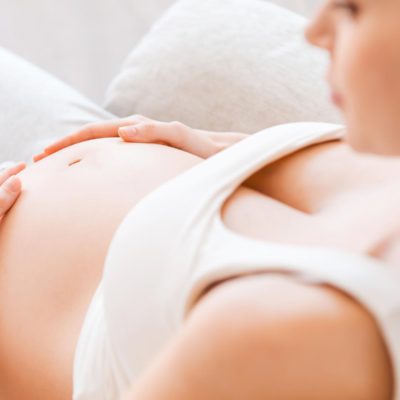 It’s also the hormone detected in a pregnancy test. Even though this hormone is there from the beginning, it takes time for it to build within your body. It typically takes three to four weeks from the first day of your last period for the hCG to increase enough to be detected by pregnancy tests.
It’s also the hormone detected in a pregnancy test. Even though this hormone is there from the beginning, it takes time for it to build within your body. It typically takes three to four weeks from the first day of your last period for the hCG to increase enough to be detected by pregnancy tests.
When should I reach out to my healthcare provider about a new pregnancy?
Most healthcare providers will have you wait to come in for an appointment until you have had a positive home pregnancy test. These tests are very accurate once you have enough hCG circulating throughout your body. This can be a few weeks after conception. It’s best to call your healthcare provider once you have a positive pregnancy test to schedule your first appointment.
When you call, your healthcare provider may ask you if you are taking a prenatal vitamin. These supplements contain folic acid. It’s important that you get at least 400mcg of folic acid each day during a pregnancy to make sure the fetus's neural tube (beginning of the brain and spine) develops correctly. Many healthcare providers suggest that you take prenatal vitamins with folic acid even when you aren’t pregnant. If you weren’t taking prenatal vitamins before your pregnancy, your provider may ask you to start as early as possible.
Many healthcare providers suggest that you take prenatal vitamins with folic acid even when you aren’t pregnant. If you weren’t taking prenatal vitamins before your pregnancy, your provider may ask you to start as early as possible.
What’s the timeline for fetal development?
The fetus will change a lot throughout a typical pregnancy. This time is divided into three stages, called trimesters. Each trimester is a set of about three months. Your healthcare provider will probably talk to you about fetal development in terms of weeks. So, if you are three months pregnancy, you are about 12 weeks.
You will see distinct changes in the fetus, and yourself, during each trimester.
Traditionally, we think of a pregnancy as a nine-month process. However, this isn’t always the case. A full-term pregnancy is 40 weeks, or 280 days. Depending on what months you are pregnant during (some are shorter and some longer) and what week you deliver, you could be pregnant for either nine months or 10 months.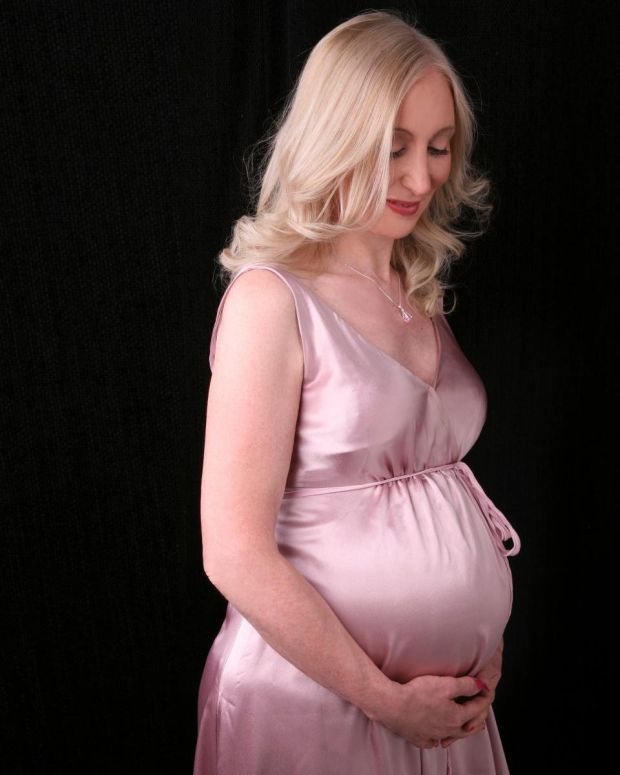 This is completely normal and healthy.
This is completely normal and healthy.
Once you get close to the end of your pregnancy, there are several category names you might hear regarding when you go into labor. These labels divide up the last few weeks of pregnancy. They’re also used to look out for certain complications in newborns. Babies that are born in the early term period or before may have a higher risk of breathing, hearing or learning issues than babies born a few weeks later in the full term time frame. When you’re looking at these labels, it’s important to know how they’re written. You may see the week first (38) and then you’ll see two numbers separated by a slash mark (6/7). This stands for how many days you currently are in the gestational week. So, if you see 38 6/7, it means that you are on day 6 of your 38th week.
The last few weeks of pregnancy are divided into the following groups:
- Early term: 37 0/7 weeks through 38 6/7 weeks.
- Full term: 39 0/7 weeks through 40 6/7 weeks.
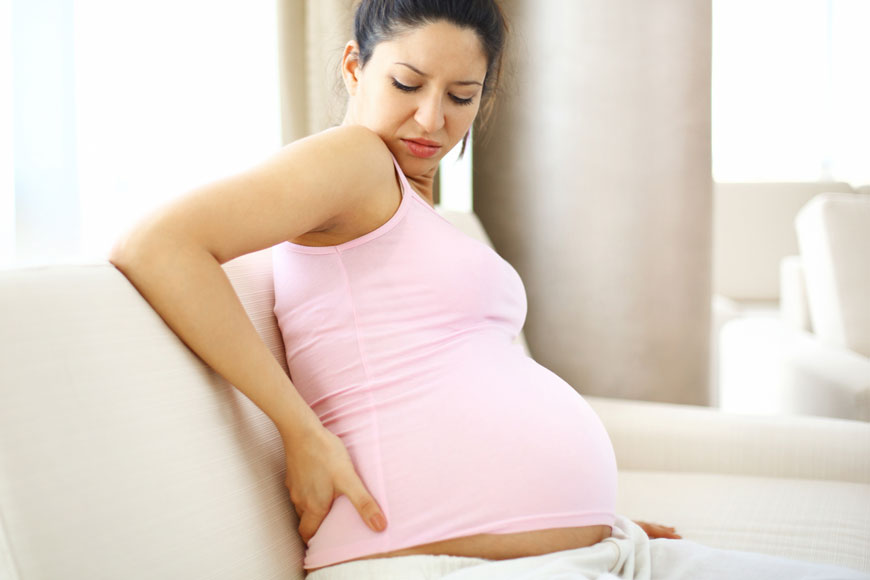
- Late term: 41 0/7 weeks through 41 6/7 weeks.
- Post term: 42 0/7 weeks and on.
Talk to your healthcare provider about any questions you may have about gestational age and due date.
Stages of Growth Month-by-Month in Pregnancy
First trimester
The first trimester will span from conception to 12 weeks. This is generally the first three months of pregnancy. During this trimester, the fertilized egg will change from a small grouping of cells to a fetus that is starting to have a baby’s features.
Month 1 (weeks 1 through 4)
As the fertilized egg grows, a water-tight sac forms around it, gradually filling with fluid. This is called the amniotic sac, and it helps cushion the growing embryo.
During this time, the placenta also develops. The placenta is a round, flat organ that transfers nutrients from the mother to the fetus, and transfers wastes from the fetus. Think of the placenta as a food source for the fetus throughout your pregnancy.
In these first few weeks, a primitive face will take form with large dark circles for eyes. The mouth, lower jaw and throat are developing. Blood cells are taking shape, and circulation will begin. The tiny "heart" tube will beat 65 times a minute by the end of the fourth week.
By the end of the first month, the fetus is about 1/4 inch long – smaller than a grain of rice.
Month 2 (weeks 5 through 8)
Facial features continue to develop. Each ear begins as a little fold of skin at the side of the head. Tiny buds that eventually grow into arms and legs are forming. Fingers, toes and eyes are also forming.
The neural tube (brain, spinal cord and other neural tissue of the central nervous system) is well formed now. The digestive tract and sensory organs begin to develop too. Bone starts to replace cartilage.
The head is large in proportion to the rest of the body at this point. At about 6 weeks, a heartbeat can usually be detected.
After the 8th week, healthcare providers refer to it as a fetus instead of an embryo.
By the end of the second month, the fetus is about 1 inch long and weighs about 1/30 of an ounce.
Month 3 (weeks 9 through 12)
The arms, hands, fingers, feet and toes are fully formed. At this stage, the fetus is starting to explore a bit by doing things like opening and closing its fists and mouth. Fingernails and toenails are beginning to develop and the external ears are formed. The beginnings of teeth are forming under the gums. The reproductive organs also develop, but sex is still difficult to distinguish on ultrasound.
By the end of the third month, the fetus is fully formed. All the organs and limbs (extremities) are present and will continue to develop in order to become functional. The circulatory and urinary systems are also working and the liver produces bile.
At the end of the third month, the fetus is about 4 inches long and weighs about 1 ounce.
Since the most critical development has taken place, your chance of miscarriage drops considerably after three months.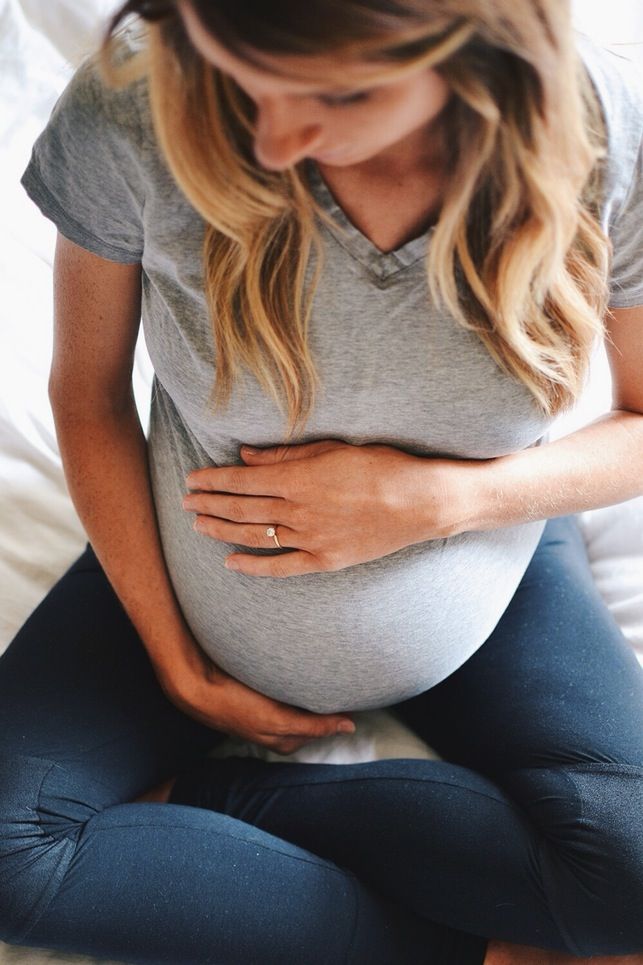
Second trimester
This middle section of pregnancy is often thought of as the best part of the experience. By this time, any morning sickness is probably gone and the discomfort of early pregnancy has faded. The fetus will start to develop facial features during this month. You may also start to feel movement as the fetus flips and turns in the uterus. During this trimester, many people find out whether their baby will be designated male or female at birth. This is typically done during an anatomy scan (an ultrasound that checks physical development) around 20 weeks.
Month 4 (weeks 13 through 16)
The fetal heartbeat may now be audible through an instrument called a doppler. The fingers and toes are well-defined. Eyelids, eyebrows, eyelashes, nails and hair are formed. Teeth and bones become denser. The fetus can even suck his or her thumb, yawn, stretch and make faces.
The nervous system is starting to function. The reproductive organs and genitalia are now fully developed, and your doctor can see on ultrasound if the fetus will be designated male or female at birth.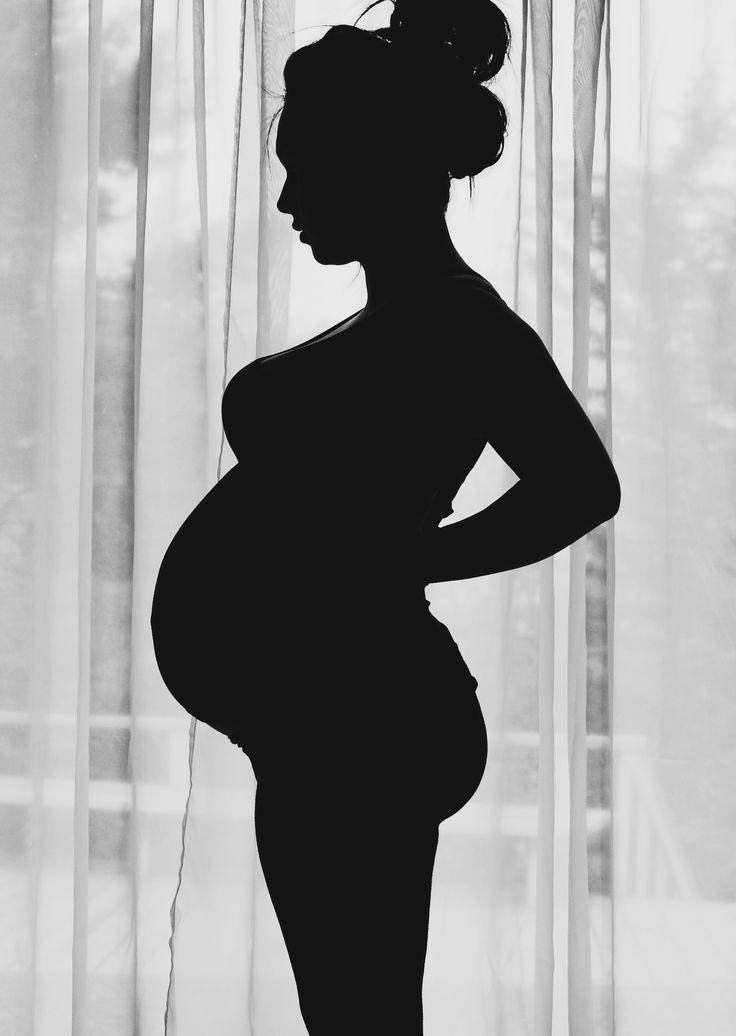
By the end of the fourth month, the fetus is about 6 inches long and weighs about 4 ounces.
Month 5 (weeks 17 through 20)
At this stage, you may begin to feel the fetus moving around. The fetus is developing muscles and exercising them. This first movement is called quickening and can feel like a flutter.
Hair begins to grow on the head. The shoulders, back and temples are covered by a soft fine hair called lanugo. This hair protects the fetus and is usually shed at the end of your baby's first week of life.
The skin is covered with a whitish coating called vernix caseosa. This "cheesy" substance is thought to protect fetal skin from the long exposure to the amniotic fluid. This coating is shed just before birth.
By the end of the fifth month, the fetus is about 10 inches long and weighs from 1/2 to 1 pound.
Month 6 (weeks 21 through 24)
If you could look inside the uterus right now, you would see that the fetus's skin is reddish in color, wrinkled and veins are visible through translucent skin. The finger and toe prints are visible. In this stage, the eyelids begin to part and the eyes open.
The finger and toe prints are visible. In this stage, the eyelids begin to part and the eyes open.
The fetus responds to sounds by moving or increasing the pulse. You may notice jerking motions if the fetus hiccups.
If born prematurely, your baby may survive after the 23rd week with intensive care.
By the end of the sixth month, the fetus is about 12 inches long and weighs about 2 pounds.
Month 7 (weeks 25 through 28)
The fetus continues to mature and develop reserves of body fat. At this point, hearing is fully developed. The fetus changes position frequently and responds to stimuli, including sound, pain and light. The amniotic fluid begins to diminish.
If born prematurely, your baby would be likely to survive after the seventh month.
At the end of the seventh month, the fetus is about 14 inches long and weighs from 2 to 4 pounds.
Third trimester
This is the final part of your pregnancy. You may be tempted to start the countdown till your due date and hope that it would come early, but each week of this final stage of development helps the fetus prepare for birth. Throughout the third trimester, the fetus gains weight quickly, adding body fat that will help after birth.
Throughout the third trimester, the fetus gains weight quickly, adding body fat that will help after birth.
Remember, even though popular culture only mentions nine months of pregnancy, you may actually be pregnant for 10 months. The typical, full-term pregnancy is 40 weeks, which can take you into a tenth month. It’s also possible that you can go past your due date by a week or two (41 or 42 weeks). Your healthcare provider will monitor you closely as you approach your due date. If you pass your due date, and don’t go into spontaneous labor, your provider may induce you. This means that medications will be used to make you go into labor and have the baby. Make sure to talk to your healthcare provider during this trimester about your birth plan.
Month 8 (weeks 29 through 32)
The fetus continues to mature and develop reserves of body fat. You may notice more kicking. The brain developing rapidly at this time, and the fetus can see and hear. Most internal systems are well developed, but the lungs may still be immature.
The fetus is about 18 inches long and weighs as much as 5 pounds.
Month 9 (weeks 33 through 36)
During this stage, the fetus continues to grow and mature. The lungs are close to being fully developed at this point.
The fetus has coordinated reflexes and can blink, close the eyes, turn the head, grasp firmly, and respond to sounds, light and touch.
The fetus is about 17 to 19 inches long and weighs from 5 ½ pounds to 6 ½ pounds.
Month 10 (Weeks 37 through 40)
In this final month, you could go into labor at any time. You may notice that less movement because space is tight. At this point, The fetus's position may have changed to prepare for birth. Ideally, it's head down in your uterus. You may feel very uncomfortable in this final stretch of time as the fetus drops down into your pelvis and prepares for birth.
Your baby is ready to meet the world at this point. They are about 18 to 20 inches long and weigh about 7 pounds.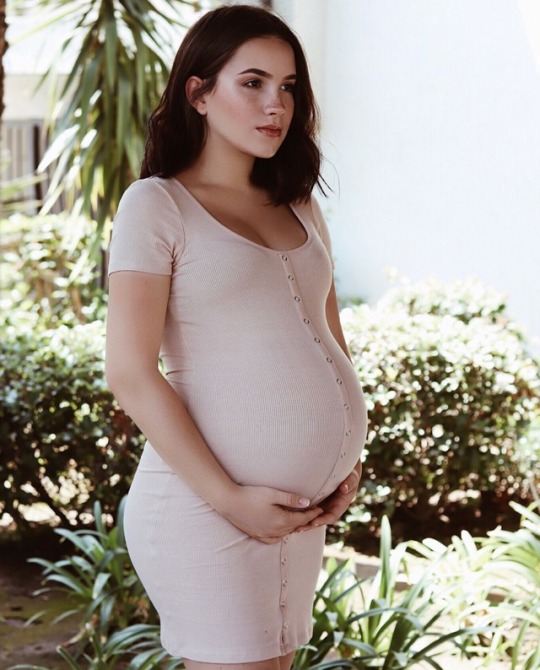
Your baby in the womb: Development of the fetus by week
- Pregnancy
- Your Baby
By Kate Marple
|
|
December 1, 2021
From conception to labor, your baby is constantly growing and developing. Your baby moves through different stages, starting as a blastocyst, then maturing into an embryo, and then a fetus. Around the 5 week mark, your baby's heart will begin to beat, at 27 weeks they'll have regular sleep and wake cycles, and at 39 weeks your baby is physically developed. Use this timeline to learn how big your baby is, plus how they're developing throughout pregnancy.
-
Follow your baby's development week by week, from conception to labor, in these amazingly detailed, doctor-reviewed images.
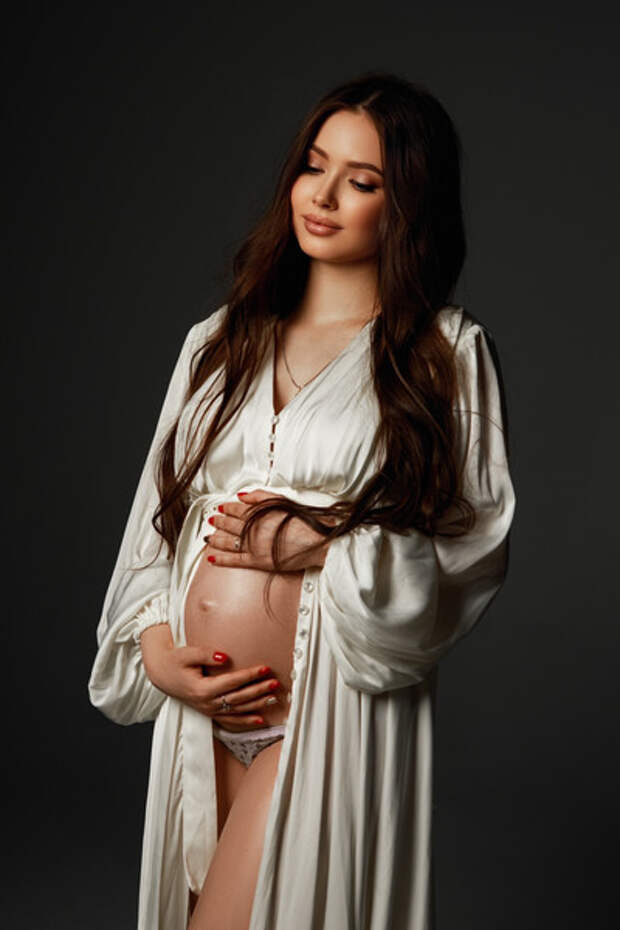
-
At the start of this week, you ovulate. Your egg is fertilized 12 to 24 hours later if a sperm penetrates it. Over the next several days, the fertilized egg will start dividing into multiple cells as it travels down the fallopian tube, enters your uterus, and starts to burrow into the uterine lining.
Read about fertilization.
-
Now nestled in the nutrient-rich lining of your uterus is a microscopic ball of hundreds of rapidly multiplying cells that will develop into your baby.
 This ball of cells, called a blastocyst, has begun to produce the pregnancy hormone hCG, which tells your ovaries to stop releasing eggs.
This ball of cells, called a blastocyst, has begun to produce the pregnancy hormone hCG, which tells your ovaries to stop releasing eggs.Read about implantation.
-
Your ball of cells is now officially an embryo. You're now about 4 weeks from the beginning of your last period. It's around this time – when your next period would normally be due – that you might be able to get a positive result on a home pregnancy test.
Your baby is the size of a poppy seed.
Read about your pregnancy at 4 weeks.
-
Your baby resembles a tadpole more than a human, but is growing fast.
 The circulatory system is beginning to form, and the tiny "heart" will start to beat this week.
The circulatory system is beginning to form, and the tiny "heart" will start to beat this week.Your baby is the size of a sesame seed.
Read about your pregnancy at 5 weeks.
-
advertisement
-
Your baby's nose, mouth and ears are starting to take shape, and their intestines and brain are beginning to develop.
Your baby is the size of a lentil.
Read about your pregnancy at 6 weeks.
-
Your baby has doubled in size since last week, but still has a tail, which will soon disappear.
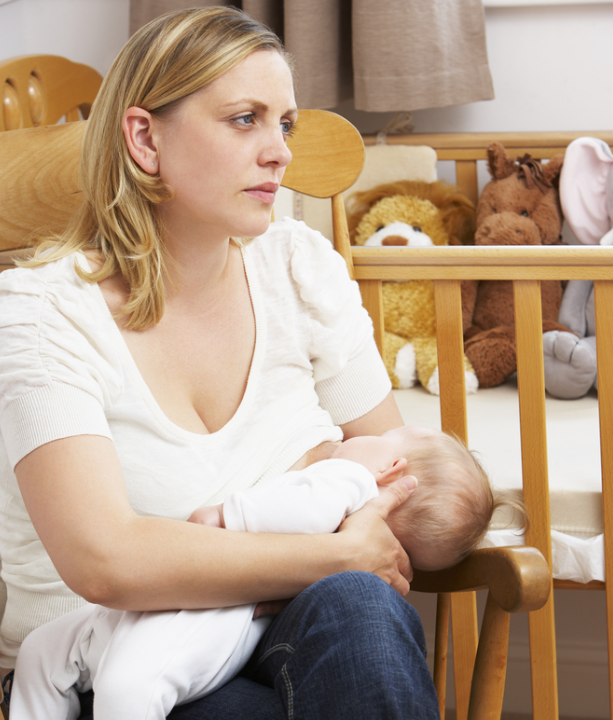 Little hands and feet that look more like paddles are emerging from the developing arms and legs.
Little hands and feet that look more like paddles are emerging from the developing arms and legs.Your baby is the size of a blueberry.
Read about your pregnancy at 7 weeks.
-
Your baby has started moving around, though you won't feel movement yet. Nerve cells are branching out, forming primitive neural pathways. Breathing tubes now extend from their throat to their developing lungs.
Your baby is the size of a kidney bean.
Read about your pregnancy at 8 weeks.
-
Your baby's basic anatomy is developing (they even have tiny earlobes now), but there's much more to come.
 Their embryonic tail has disappeared and they weigh just a fraction of an ounce but are about to start gaining weight fast.
Their embryonic tail has disappeared and they weigh just a fraction of an ounce but are about to start gaining weight fast.Your baby is the size of a grape.
Read about your pregnancy at 9 weeks.
-
Your embryo has completed the most critical portion of development. Their skin is still translucent, but their tiny limbs can bend and fine details like nails are starting to form.
Your baby is the size of a kumquat
Read about your pregnancy at 10 weeks.
-
advertisement
-
Your baby is almost fully formed.
 They're kicking, stretching, and even hiccupping as their diaphragm develops, although you can't feel any activity yet.
They're kicking, stretching, and even hiccupping as their diaphragm develops, although you can't feel any activity yet.Your baby is the size of a fig.
Read about your pregnancy at 11 weeks.
-
This week your baby's reflexes kick in: Their fingers will soon begin to open and close, toes will curl, and their mouth will make sucking movements, although you won't feel their movements quite yet.
Your baby is the size of a lime.
Read about your pregnancy at 12 weeks.
-
This is the last week of your first trimester.
 Your baby's tiny fingers now have fingerprints, and their veins and organs are clearly visible through their skin. If you're having a girl, her ovaries contain more than 2 million eggs.
Your baby's tiny fingers now have fingerprints, and their veins and organs are clearly visible through their skin. If you're having a girl, her ovaries contain more than 2 million eggs.Your baby is the size of a pea pod.
Read about your pregnancy at 13 weeks.
-
In this illustration, you can see how big – and yet, how tiny still – your baby is as you begin your second trimester.

After the first trimester, a miscarriage is much less likely. And for many moms-to-be, early pregnancy symptoms like morning sickness and fatigue have faded away. If you're feeling more energetic now and haven't been exercising, it's a good time to start a regular pregnancy fitness routine.
Plus: See our ultimate pregnancy to-do list for the second trimester
-
Your baby's brain impulses have begun to fire and they're using their facial muscles. Their kidneys are working now, too. If you have an ultrasound, you may even see them sucking their thumb.
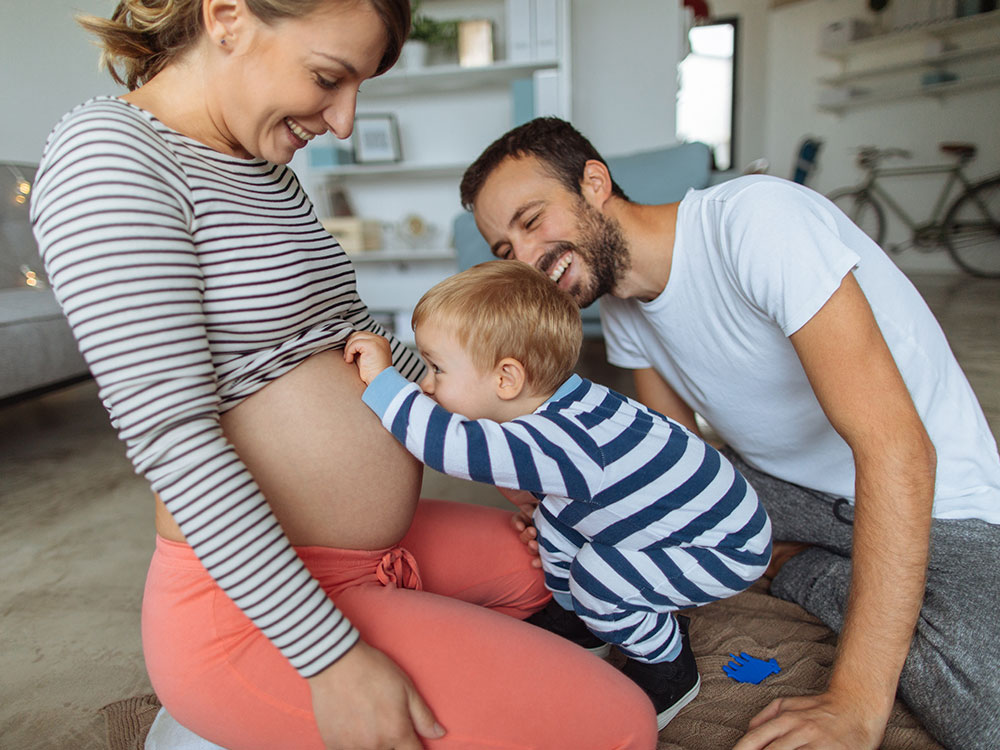
Your baby is the size of a lemon.
Read about your pregnancy at 14 weeks.
-
advertisement
-
Your baby's eyelids are still fused shut, but they can sense light. If you shine a flashlight on your tummy, they'll move away from the beam. Ultrasounds done this week may reveal your baby's sex.
Your baby is the size of an apple.
Read about your pregnancy at 15 weeks.
-
The patterning on your baby's scalp has begun, though their hair isn't visible yet.
Their legs are more developed, their head is more upright, and their ears are close to their final position.
Your baby is the size of an avocado.
Read about your pregnancy at 16 weeks.
-
Your baby can move their joints, and their skeleton – formerly soft cartilage – is now hardening to bone. The umbilical cord is growing stronger and thicker.
Your baby is the size of a turnip.
Read about your pregnancy at 17 weeks.
-
Your baby is flexing their arms and legs, and you may be able to feel those movements.
 Internally, a protective coating of myelin is forming around their nerves.
Internally, a protective coating of myelin is forming around their nerves.Your baby is the size of a bell pepper.
Read about your pregnancy at 18 weeks.
-
Your baby's senses – smell, vision, touch, taste and hearing – are developing and they may be able to hear your voice. Talk, sing or read out loud to them, if you feel like it.
Your baby is the size of an heirloom tomato.
Read about your pregnancy at 19 weeks.
-
advertisement
-
Your baby can swallow now and their digestive system is producing meconium, the dark, sticky goo that they'll pass in their first poop – either in their diaper or in the womb during delivery.

Your baby is the size of a banana.
Read about your pregnancy at 20 weeks.
-
Your baby's movements have gone from flutters to full-on kicks and jabs against the walls of your womb. You may start to notice patterns as you become more familiar with their activity.
Your baby is the size of a carrot.
Read about your pregnancy at 21 weeks.
-
Your baby now looks almost like a miniature newborn.
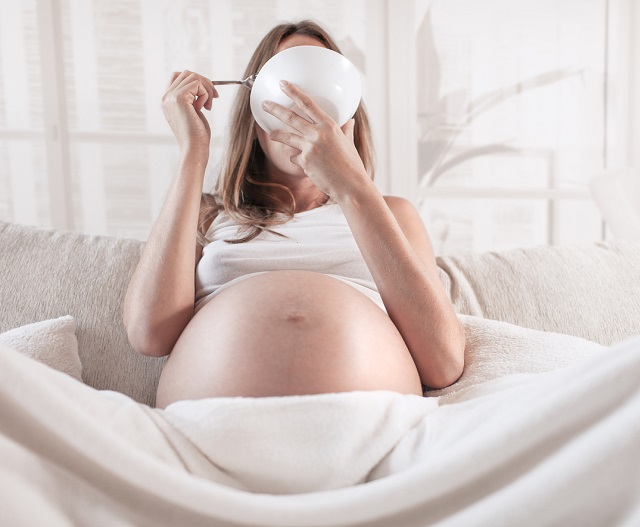 Features such as lips and eyebrows are more distinct, but the pigment that will color their eyes isn't present yet.
Features such as lips and eyebrows are more distinct, but the pigment that will color their eyes isn't present yet.Your baby is the size of a spaghetti squash.
Read about your pregnancy at 22 weeks.
-
Your baby's ears are getting better at picking up sounds. After birth, they may recognize some noises outside the womb that they're hearing inside now.
Your baby is the size of a large mango.
Read about your pregnancy at 23 weeks.
-
Your baby cuts a pretty long and lean figure, but chubbier times are coming.
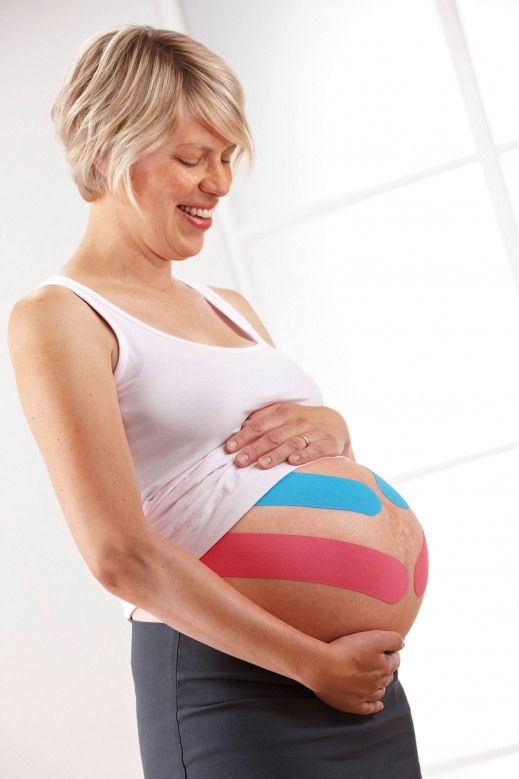 Their skin is still thin and translucent, but that will begin to change soon too.
Their skin is still thin and translucent, but that will begin to change soon too.Your baby is the size of an ear of corn.
Read about your pregnancy at 24 weeks.
-
advertisement
-
Your baby's wrinkled skin is starting to fill out with baby fat, making them look more like a newborn. Their hair is beginning to come in, and it has color and texture.
Your baby is now the same weight as an average rutabaga.
Read about your pregnancy at 25 weeks.
-
Your baby is now inhaling and exhaling amniotic fluid, which helps develop their lungs.
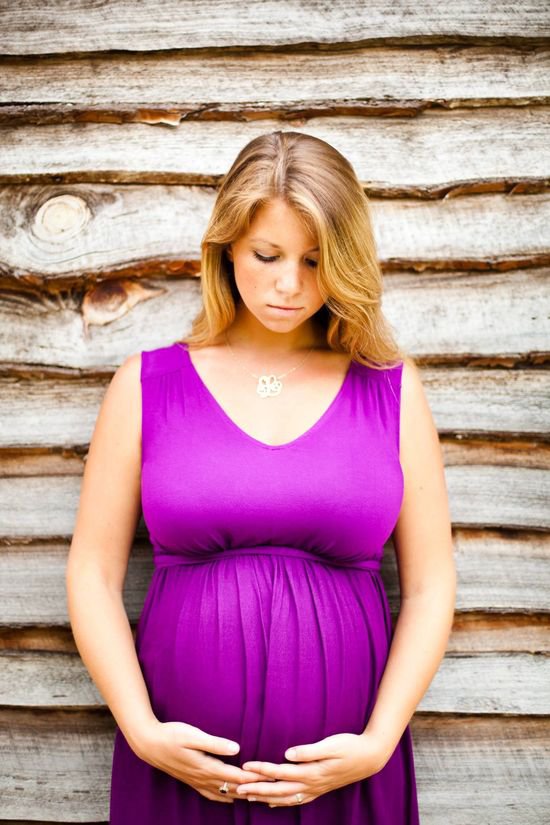 These breathing movements are good practice for that first breath of air at birth.
These breathing movements are good practice for that first breath of air at birth.Your baby is the size of a bunch of scallions.
Read about your pregnancy at 26 weeks.
-
This is the last week of your second trimester. Your baby now sleeps and wakes on a regular schedule, and their brain is very active. Their lungs aren't fully formed, but they could function outside the womb with medical help.
Your baby is the size of a head of cauliflower.
Read about your pregnancy at 27 weeks.
-
In this illustration, you'll notice that your growing baby takes up quite a bit of room these days.
 In the third trimester, you might be peeing more often or have leg cramps as they press on nerves in your hips and back.
In the third trimester, you might be peeing more often or have leg cramps as they press on nerves in your hips and back.Now's the time to do things like sign up for a childbirth class, choose a doctor for your baby, and create a baby registry, if you haven't done so already.
-
Your baby's eyesight is developing, which may enable them to sense light filtering in from the outside. They can blink, and their eyelashes have grown in.
Your baby is the size of a large eggplant.
Read about your pregnancy at 28 weeks.
-
advertisement
-
Your baby's muscles and lungs are busy getting ready to function in the outside world, and their head is growing to make room for their developing brain.

Your baby is the size of a butternut squash.
Read about your pregnancy at 29 weeks.
-
Your baby is surrounded by a pint and a half of amniotic fluid, although there will be less of it as they grow and claim more space inside your uterus.
Your baby is the size of a large cabbage.
Read about your pregnancy at 30 weeks.
-
Your baby can now turn their head from side to side.
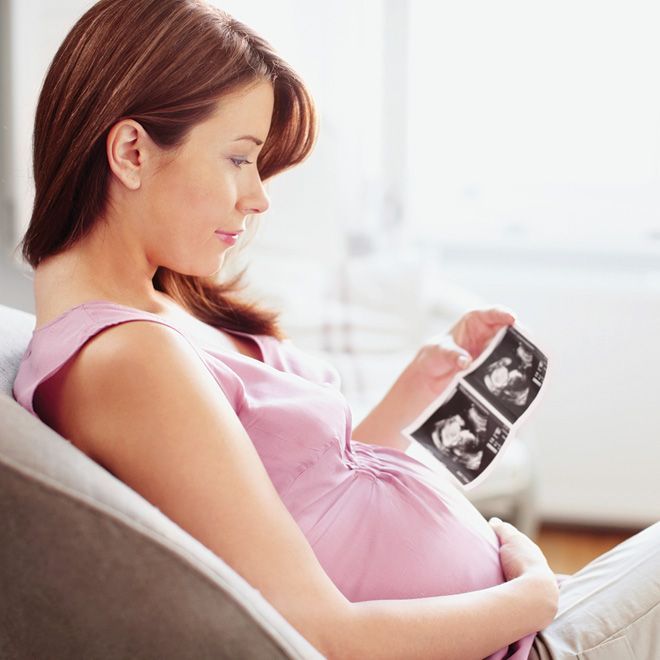 A protective layer of fat is accumulating under their skin, filling out their arms and legs.
A protective layer of fat is accumulating under their skin, filling out their arms and legs.Your baby is the size of a coconut.
Read about your pregnancy at 31 weeks.
-
You're probably gaining about a pound a week now. Half of that goes straight to your baby, who will gain one-third to half their birth weight in the next seven weeks in preparation for life outside the womb.
Your baby is the size of a large jicama.
Read about your pregnancy at 32 weeks.
-
The bones in your baby's skull aren't fused yet.
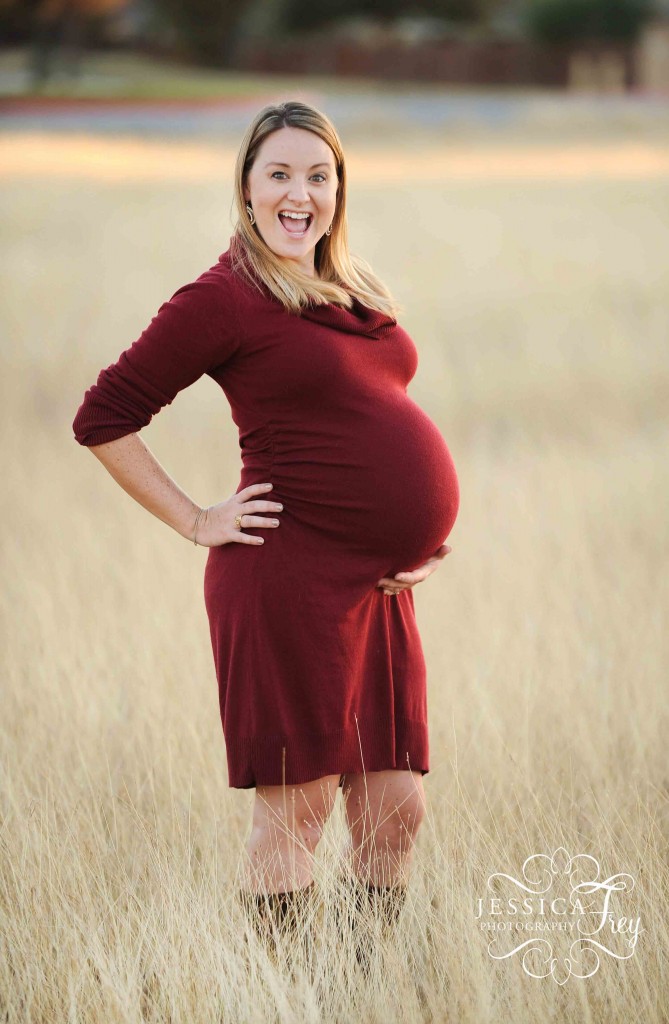 That allows them to shift as their head squeezes through the birth canal. They won't fully fuse until adulthood.
That allows them to shift as their head squeezes through the birth canal. They won't fully fuse until adulthood.Your baby is the size of a pineapple.
Read about your pregnancy at 33 weeks.
-
advertisement
-
Your baby's central nervous system is maturing, as are their lungs. Babies born between 34 and 37 weeks who have no other health problems usually do well in the long run.
Your baby is the size of a cantaloupe.
Read about your pregnancy at 34 weeks.
-
It's getting snug inside your womb! Your baby's kidneys are fully developed, and their liver can process some waste products.
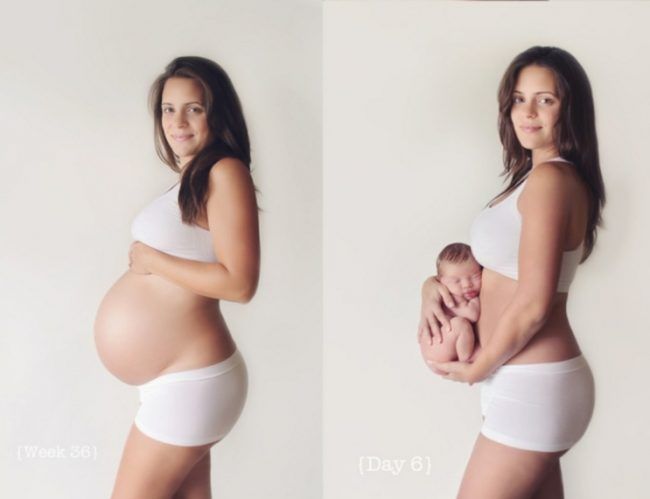
Your baby is the size of a honeydew melon.
Read about your pregnancy at 35 weeks.
-
Your baby is gaining about an ounce a day. They're also losing most of their lanugo hair that covered their body, along with the vernix caseosa, a waxy substance that was protecting their skin until now.
Your baby is the size of a head of romaine lettuce.
Read about your pregnancy at 36 weeks.
-
Your due date is very close, and though your baby looks like a newborn, your baby is now considered at term.
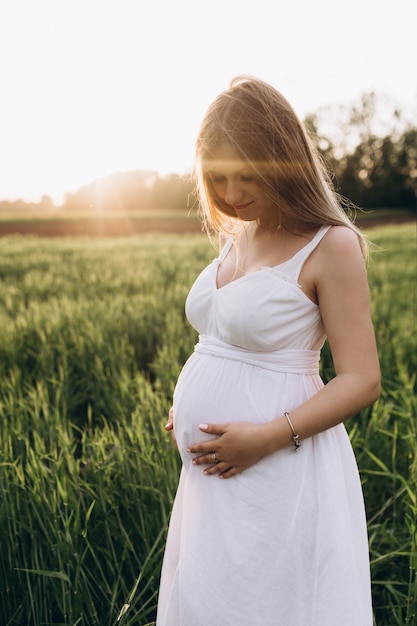 Over the next two weeks their lungs and brain will continue to mature. You can go into labor any day now.
Over the next two weeks their lungs and brain will continue to mature. You can go into labor any day now.Your baby is the size of a bunch of Swiss chard.
Read about your pregnancy at 37 weeks.
-
Are you curious about your baby's eye color? Their irises are not fully pigmented, so if they're born with blue eyes, they could change to a darker color up until they're about a year old.
Your baby is the size of a leek.
Read about your pregnancy at 38 weeks.
-
advertisement
-
At 39 weeks, your baby will be considered full-term.
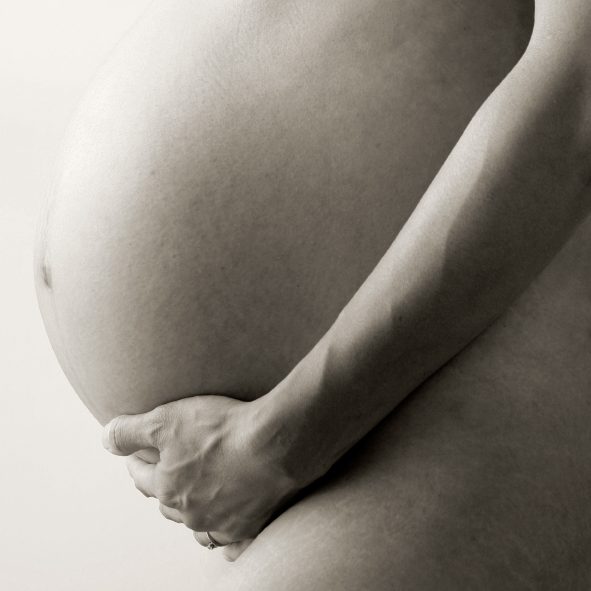 In the illustration, you can see the mucus plug sealing your uterus and how squished your intestines are now.
In the illustration, you can see the mucus plug sealing your uterus and how squished your intestines are now. -
Your baby's physical development is complete, but they're still busy putting on fat and growing bigger.
Your baby is the size of a mini watermelon.
Read about your pregnancy at 39 weeks.
-
If you're past your due date, you may not be as late as you think, especially if you calculated it solely based on the day of your last period.
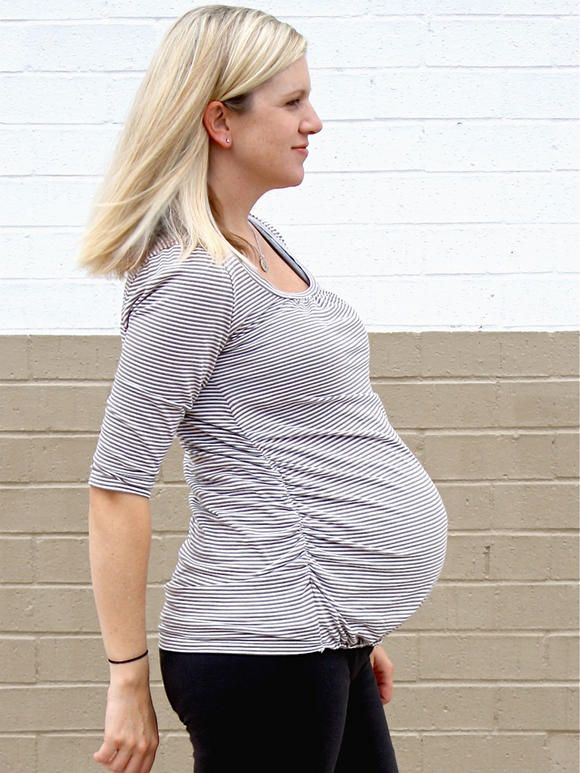 Sometimes women ovulate later than expected.
Sometimes women ovulate later than expected.Your provider will continuously assess your pregnancy to make sure you can safely continue your pregnancy.
Your baby is the size of a small pumpkin.
Read about your pregnancy at 40 weeks.
-
Your baby is now considered late-term. Going more than two weeks past your due date can put you and your baby at risk for complications, so your provider will probably talk to you about inducing labor. They may perform a Fetal Non-Stress test to monitor your baby's fetal heart rate and your contractions to make sure your baby isn't in any fetal distress.
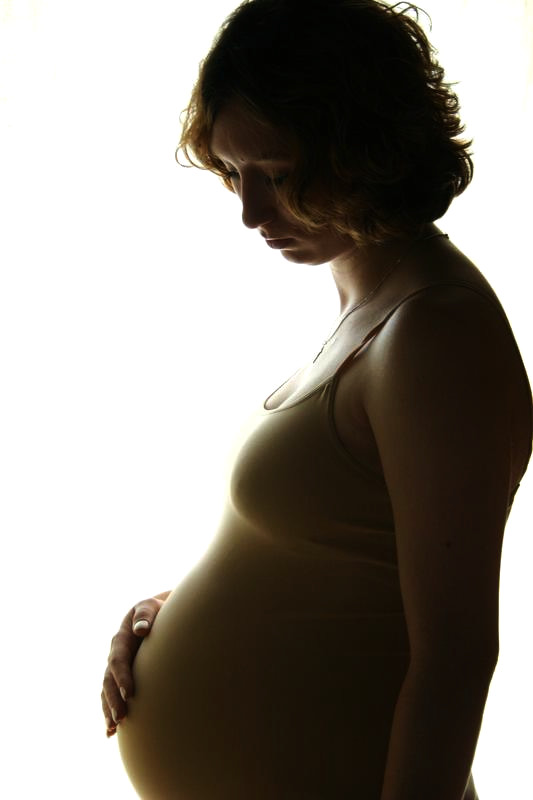
Read about your pregnancy at 41 weeks.
-
Meeting your baby for the first time is so exciting – but exactly what will lead up to that moment is unpredictable, and it's natural to feel nervous. Here's some help as you prepare for the big day. Find out how you'll know you're in labor and what to expect from delivery, understand your childbirth choices, and more.
Learn the signs and stages of labor
Watch live birth videos
Take our free childbirth class
Sources
BabyCenter's editorial team is committed to providing the most helpful and trustworthy pregnancy and parenting information in the world.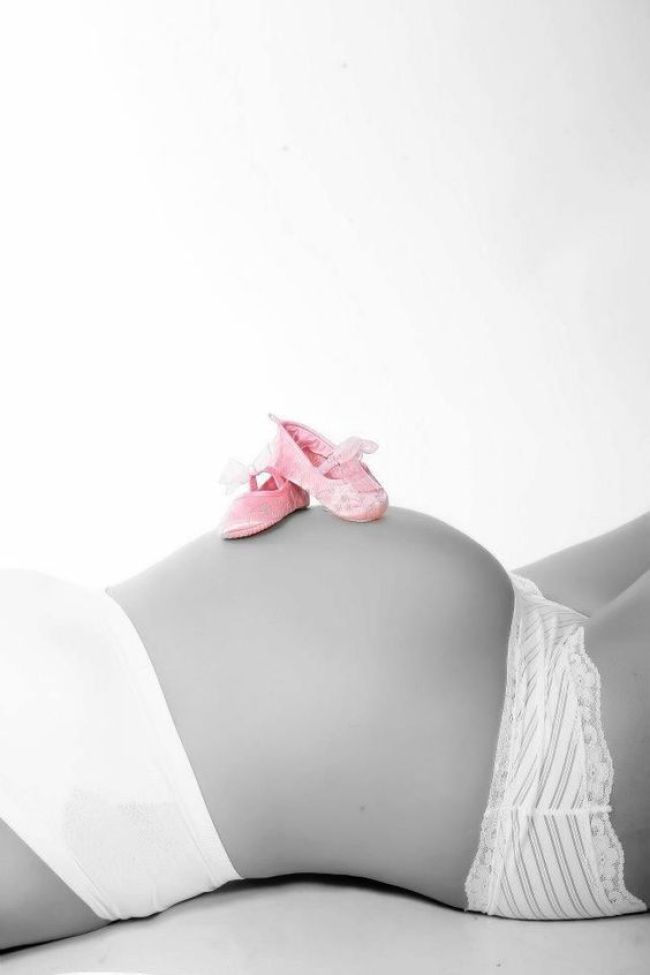 When creating and updating content, we rely on credible sources: respected health organizations, professional groups of doctors and other experts, and published studies in peer-reviewed journals. We believe you should always know the source of the information you're seeing. Learn more about our editorial and medical review policies.
When creating and updating content, we rely on credible sources: respected health organizations, professional groups of doctors and other experts, and published studies in peer-reviewed journals. We believe you should always know the source of the information you're seeing. Learn more about our editorial and medical review policies.
Sources public: AAFP. 2011a. Your baby’s development: The first trimester. American Academy of Family Physicians. https://familydoctor.org/your-babys-development-the-first-trimester/ [Accessed December 2021]
AAFP. 2011b. Your baby’s development: The second trimester. American Academy of Family Physicians. https://familydoctor.org/your-babys-development-the-second-trimester/ [Accessed December 2021]
AAFP. 2011c. Your baby’s development: The third trimester. American Academy of Family Physicians. https://familydoctor.org/your-babys-development-the-third-trimester/ [Accessed December 2021]
ACOG. 2015. FAQ156. Prenatal development: How your baby grows during pregnancy. American College of Obstetricians and Gynecologists. [Accessed December 2021]
American College of Obstetricians and Gynecologists. [Accessed December 2021]
Mayo Clinic. 2015. Fetal development: The 2nd trimester. https://www.mayoclinic.org/healthy-lifestyle/pregnancy-week-by-week/in-depth/fetal-development/art-20046151 [Accessed December 2021]
Mayo Clinic. 2014a. Fetal development: The 1st trimester. https://www.mayoclinic.org/healthy-lifestyle/pregnancy-week-by-week/in-depth/prenatal-care/art-20045302 [Accessed December 2021]
Mayo Clinic. 2014b. Fetal development: The third trimester. https://www.mayoclinic.org/healthy-lifestyle/pregnancy-week-by-week/in-depth/fetal-development/art-20045997 [Accessed December 2021]
MedlinePlus (ADAM). 2015. Fetal development. https://medlineplus.gov/ency/article/002398.htm [Accessed December 2021]
OWH. 2010. Stages of pregnancy. U.S. Office on Women’s Health. https://www.womenshealth.gov/pregnancy/youre-pregnant-now-what/stages-pregnancy [Accessed December 2021]
Show more
How big is my baby? Week-by-week fruit and veggie comparisons
What to eat when pregnant: The 12 best foods
Cute maternity clothes ideas for every pregnancy body type
Pregnant belly photos
advertisement | page continues below
advertisement
Featured video
All pregnancy, parenting, and birth videos >
How to communicate with a child during pregnancy
When expecting a baby, expectant parents often ask themselves whether it is necessary to communicate with the child while he is still in the tummy, does it make any sense at all? Our perinatal psychologist Oksana Brezhneva explains why it is necessary and how best to do it.
Why should I communicate with my baby during pregnancy?
- From about 8-10 weeks, the baby's senses are actively developing, and he is able to respond to your touch, warmth, pain, vibration.
- By 18-20 weeks, he already has character traits, and facial expressions are able to convey emotions. Brain activity develops quite actively, the baby hears and perceives what is happening in the outside world.
- By the 24th week, the vestibular apparatus is well developed and the baby is able to control his movements, take a comfortable position, express dissatisfaction and experience positive emotions.
There is no doubt! The kid, developing, feels everything and is waiting for your communication with him!
With regular communication with the child throughout the pregnancy (which proceeded as comfortably as possible for the mother, without stress and worries), emotionally healthy, calm, balanced children are born. Sometimes children themselves can ask for attention from their parents, wanting to be talked to and caressed, while becoming more active and mobile. Studies confirm that children with whom their parents talked in the womb, after birth, react more actively to the voices of their parents, cry less, calm down faster, and begin to develop earlier.
Studies confirm that children with whom their parents talked in the womb, after birth, react more actively to the voices of their parents, cry less, calm down faster, and begin to develop earlier.
How to communicate with the baby?
To establish contact with the baby in the mother's tummy - observe his activity, remembering what time of the day he is more mobile. At such moments, talk with the baby, tell him about what you like, about what beauty awaits him in this World. Mom can tell what kind of dad the baby has and how he loves him and takes care of him, and dad can tell about mom, because the child hears the voices of his parents in different ways (mother's vibrations from the inside, and dad's vibrations from the outside). Conversations with the baby in the womb should be very tender and sincere.
Choose a way to address your little one so that he knows and gets used to the fact that this is how you talk to him. It is recommended to communicate with the baby for at least 15 minutes daily. Over time, you will notice that he answers you and pushes exactly in the place where you hold your hand.
Over time, you will notice that he answers you and pushes exactly in the place where you hold your hand.
A child in the womb, constantly hearing his mother's voice, will know that she is near, that she remembers him and is always ready to tell him something affectionate and tender. Such communication allows you to establish an emotional connection with the child during pregnancy and contributes to a better contact of parents (especially mothers) with the baby after he is born.
Show your child that he is long-awaited and dearly loved by both parents, because the baby feels and hears everything while still in his mother's tummy! And remember, it's never too late to start talking to your child!
Perinatal psychologist Oksana Sergeevna Brezhneva receives in two branches of the Territory of Health - on the Oktyabrsky field and on Tulskaya.
Child development by week | Regional Perinatal Center
Expectant mothers are always curious about how the fetus develops at a time when it is awaited with such impatience. Let's talk and look at photos and pictures of how the fetus grows and develops week by week.
Let's talk and look at photos and pictures of how the fetus grows and develops week by week.
What does the puffer do for 9 whole months in the mother's tummy? What does he feel, see and hear?
Let's start the story about the development of the fetus by weeks from the very beginning - from the moment of fertilization. A fetus up to 8 weeks old is called embryo , this occurs before the formation of all organ systems.
Embryo development: 1st week
The egg is fertilized and begins to actively split. The ovum is sent to the uterus, freeing itself from the shell along the way.
On the 6th-8th days, implantation of eggs is carried out - implantation in the uterus. The egg settles on the surface of the uterine mucosa and, using the chorionic villi, attaches to the uterine mucosa.
Embryo development: 2-3 weeks
Picture of embryo development at 3 weeks.
The embryo is actively developing, starting to separate from the membranes. At this stage, the beginnings of the muscular, skeletal and nervous systems are formed. Therefore, this period of pregnancy is considered important.
At this stage, the beginnings of the muscular, skeletal and nervous systems are formed. Therefore, this period of pregnancy is considered important.
Embrio development: 4–7 weeks
Development of the fetus in weeks: Week 4
Development of Week Photo: Week 4
9005 900 weeks of pregnancy.
The heart, head, arms, legs and tail are formed in the embryo :) . Gill slit is defined. The length of the embryo at the fifth week reaches 6 mm.
Development of the fetus by weeks photo: week 5
At the 7th week, the rudiments of the eyes, abdomen and chest are determined, and fingers appear on the handles. The baby already has a sense organ - the vestibular apparatus. The length of the embryo is up to 12 mm.
Fetal development: 8th week
Fetal development by week photo: week 7-8
The face of the fetus is determined, you can distinguish the mouth, nose, auricles. The head of the embryo is large and its length corresponds to the length of the body; the fetal body is formed. All significant, but not yet fully formed, elements of the baby's body already exist. The nervous system, muscles, skeleton continue to improve.
The head of the embryo is large and its length corresponds to the length of the body; the fetal body is formed. All significant, but not yet fully formed, elements of the baby's body already exist. The nervous system, muscles, skeleton continue to improve.
Development of the fetus in the photo already sensitive arms and legs: week 8
The fetus developed skin sensitivity in the mouth area (preparation for the sucking reflex), in the area of the palm and hand.
At this stage of pregnancy, the genitals are already visible. Gill slits die. The fruit reaches 20 mm in length.
Fetal development: 9-10 weeks
Fetal development by week photo: week 9
Fingers and toes are already nailed. The fetus begins to move in the pregnant woman's stomach, but the mother does not yet feel it. With a special stethoscope, you can hear the baby's heartbeat. Muscles continue to develop.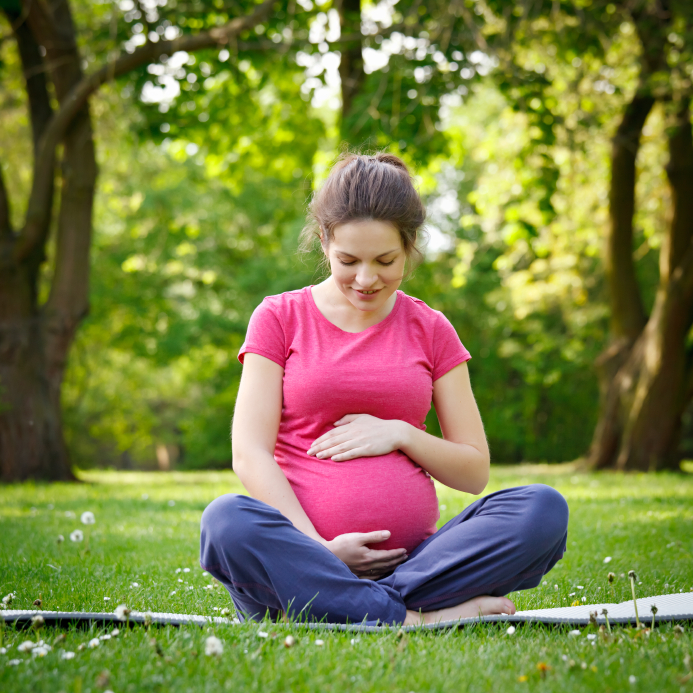
Fetal development by weeks photo: week 10
The entire surface of the fetal body is sensitive and the baby develops tactile sensations with pleasure, touching his own body, the walls of the amniotic sac and the umbilical cord. It is very curious to observe this on ultrasound. By the way, the baby first moves away from the ultrasound sensor (of course, because it is cold and unusual!), And then puts his hands and heels trying to touch the sensor.
Surprisingly, when a mother puts her hand on her stomach, the baby tries to master the world and tries to touch with his pen “from the back”.
fetal development: 11–14 weeks
Development of the fetus in the photo of the legs: week 11
In the baby, the legs, legs and eyelids are formed, and the genitals become distinguishable (you can find out the gender (you can find out the gender child). The fetus begins to swallow, and if something is not to its taste, for example, if something bitter gets into the amniotic fluid (mother ate something), then the baby will begin to frown and stick out his tongue, making less swallowing movements.
The fetus begins to swallow, and if something is not to its taste, for example, if something bitter gets into the amniotic fluid (mother ate something), then the baby will begin to frown and stick out his tongue, making less swallowing movements.
Fruit skin appears translucent.
Fruit development: Week 12
Photo of the fetus 12 weeks per 3D Ultrasound
Development of Week photo: Week 14
Fetal development: 15-18 weeks
Fetal development by weeks photo: week 15
The skin turns pink, the ears and other parts of the body, including the face, are already visible. Imagine, a child can already open his mouth and blink, as well as make grasping movements. The fetus begins to actively push in the mother's tummy. The sex of the fetus can be determined by ultrasound.
The sex of the fetus can be determined by ultrasound.
Fetal development: 19-23 weeks
Fetal development by week photo: week 19
Baby sucks his thumb, becomes more energetic. Pseudo-feces are formed in the intestines of the fetus - meconium , kidneys begin to work. During this period, the brain develops very actively.
Fetal development by week photo: week 20
The auditory ossicles become stiff and now they are able to conduct sounds, the baby hears his mother - heartbeat, breathing, voice. The fetus intensively gains weight, fat deposits are formed. The weight of the fetus reaches 650 g, and the length is 300 mm.
The lungs at this stage of fetal development are so developed that the baby can survive in the artificial conditions of the intensive care unit.
Fetal development: 24-27 weeks
Lungs continue to develop. Now the baby is already falling asleep and waking up. Downy hairs appear on the skin, the skin becomes wrinkled and covered with grease. The cartilage of the ears and nose is still soft.
Downy hairs appear on the skin, the skin becomes wrinkled and covered with grease. The cartilage of the ears and nose is still soft.
Fetal development by week photo: week 27
Lips and mouth become more sensitive. The eyes develop, open slightly and can perceive light and squint from direct sunlight. In girls, the labia majora do not yet cover the small ones, and in boys, the testicles have not yet descended into the scrotum. Fetal weight reaches 900–1200 g, and the length is 350 mm.
9 out of 10 children born at this term survive.
Fetal development: 28-32 weeks
The lungs are now adapted to breathe normal air. Breathing is rhythmic and body temperature is controlled by the CNS. The baby can cry and responds to external sounds.
Child opens eyes while awake and closes during sleep.
The skin becomes thicker, smoother and pinkish. Starting from this period, the fetus will actively gain weight and grow rapidly.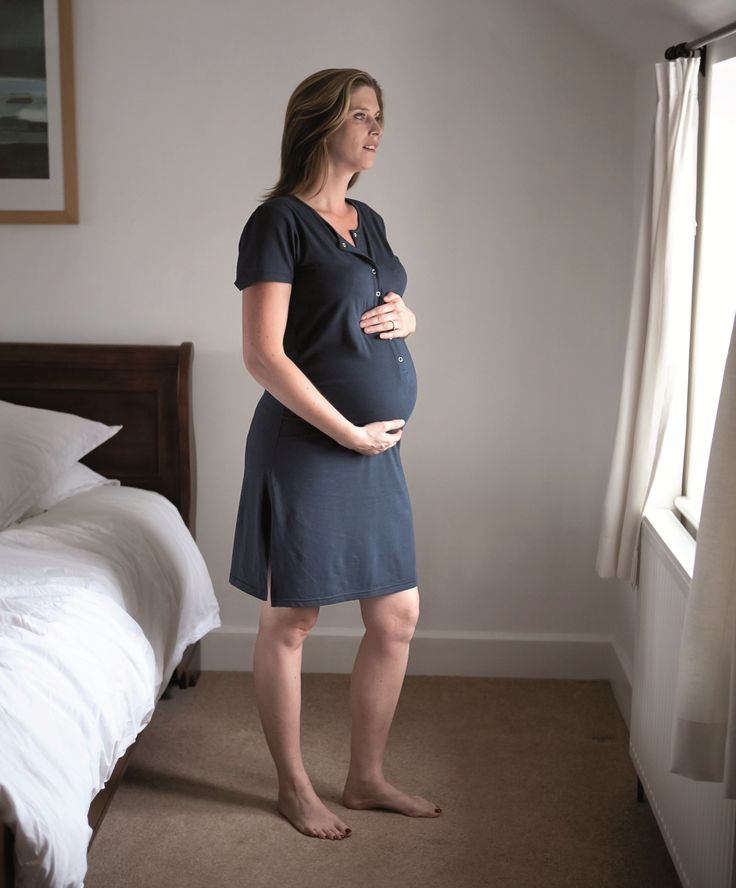 Almost all babies born prematurely at this time are viable. The weight of the fetus reaches 2500 g, and the length is 450 mm.
Almost all babies born prematurely at this time are viable. The weight of the fetus reaches 2500 g, and the length is 450 mm.
Fetal development: 33–37 weeks
Fetal development by week photo: week 36
The fetus reacts to a light source. Muscle tone increases and the baby can turn and raise his head. On which, the hairs become silky. The child develops a grasping reflex. The lungs are fully developed.
Fetal development: 38-42 weeks
The fetus is quite developed, prepared for birth and considered mature. The baby has mastered over 70 different reflex movements. Due to the subcutaneous fatty tissue, the baby's skin is pale pink. The head is covered with hairs up to 3 cm.
Fetal development by weeks photo: week 40
The baby perfectly mastered the movements of his mother , knows when she is calm, excited, upset and reacts to this with her movements. During the intrauterine period, the fetus gets used to moving in space, which is why babies love it so much when they are carried in their arms or rolled in a stroller.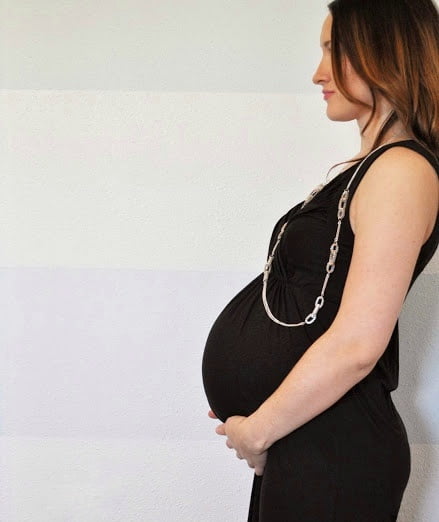 For a baby, this is a completely natural state, so he will calm down and fall asleep when he is rocked.
For a baby, this is a completely natural state, so he will calm down and fall asleep when he is rocked.
The nails protrude beyond the tips of the fingers, the cartilages of the ears and nose are elastic. In boys, the testicles have descended into the scrotum, and in girls, the large labia cover the small ones. The weight of the fetus reaches 3200-3600 g, and the length is 480-520 mm.
After the birth, the baby longs for touching his body, because at first he cannot feel himself - the arms and legs do not obey the child as confidently as it was in the amniotic fluid. Therefore, so that your baby does not feel lonely, it is advisable to carry him in your arms, press him to you while stroking his body.
And one more thing, the baby remembers the rhythm and sound of your heart very well . Therefore, you can comfort the baby in this way - take him in your arms, put him on the left side and your miracle will calm down, stop crying and fall asleep.